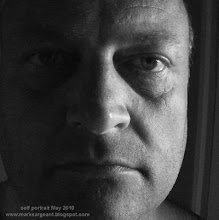 It's xmas 2008 and I wasn't expecting a Russian made Zenit 3 SLR from 1960-62. Infact they found it too expensive to make so they only made it for a couple of years. The better made ones were sent for export or sorted out by the importer with better quality control. An interesting journey this camera has had. Individually stamped with the serial number of 62202303 where it was made in the Zenit factory in Krasnogorsk in the USSR and was purchased from the John Wells camera shop at Lowestoft in the United Kingdom in the seventies. My aunt using this camera to pass her photography exam with it.
It's xmas 2008 and I wasn't expecting a Russian made Zenit 3 SLR from 1960-62. Infact they found it too expensive to make so they only made it for a couple of years. The better made ones were sent for export or sorted out by the importer with better quality control. An interesting journey this camera has had. Individually stamped with the serial number of 62202303 where it was made in the Zenit factory in Krasnogorsk in the USSR and was purchased from the John Wells camera shop at Lowestoft in the United Kingdom in the seventies. My aunt using this camera to pass her photography exam with it. It's a beautifully ugly camera that carries a certain charm about itself. Substantial and uses no batteries but feels reassuringly comfortable to use. Therefore it has no light meter built in. So you would have to use the Sunny 16 rule or a light meter. The very large viewfinder is very comfortable to use. It's like looking at a television screen inside. The mirror plate is worked by means of a length of string! You have to advance the film lever to operate this to be able to through the lens. It shuts down after every shot. It has shutter speeds from 1/30, 1/60, 1/125, 1/250, 1/500 of a second and a bulb mode. The Helios 44 f2 58mm lens it carries is a Russian copy of a Carl Zeiss Jena Biotar 58mm f/2 M42. So the optical quality is going to be of a very good pedigree. Other Zenit 3 also came fitted with an Industar 50mm/3.5 lens. On this camera they use a Leica M39 mount. So adapters exist as later in the sixties they started to make cameras with the more universal M42 screw mount. So a demand for Russian and communist bloc citizens wanting to use these lens on these later camera bodies was answered. Of course this then means you could also fit that adapter onto a M42 adapter to fit on a required film or digital SLR body. You could also use a reversing ring with a relevant camera mount to attach this lens backwards to make it a macro lens. A high quality macro lens in this case. So two possible potential avenues to explore in recycling old pieces of equipment.
Because I haven't a manual for this there were some issues to resolve. One of which I have resolved through a Google search. At first I couldn't see where you could rewind your film back after you had finished your film to unload it. Otherwise you would run the risk of ruining your film! Here you need to depress and turn clockwise to lock the ring around the shutter button. This enables the winding back of your finished roll of film. Like the relatively sized Halina 35x of the same time period the body has to be unlocked from the bottom to enable you to unload/load film. To unlock the rewind feature you need to turn anti clockwise fully then turn the top shutter so it pings back.
 On the film rewind dial there are markings of film speeds going from 350 to 11. This in GOST (a pre-1987 arithmetic standard which was used in the former Soviet Union) . This translates to iso 400 to iso 12. There are three points marked on the outer rim. One black dot marks a circle with a dot in the middle (where the 180 is in the image) and the other two are red dots marking a sun symbol (shown) and a light bulb respectively. The function of is it acts as a visual remider for what film you are using and doesn't have any effect over the film exposure!
On the film rewind dial there are markings of film speeds going from 350 to 11. This in GOST (a pre-1987 arithmetic standard which was used in the former Soviet Union) . This translates to iso 400 to iso 12. There are three points marked on the outer rim. One black dot marks a circle with a dot in the middle (where the 180 is in the image) and the other two are red dots marking a sun symbol (shown) and a light bulb respectively. The function of is it acts as a visual remider for what film you are using and doesn't have any effect over the film exposure!This week weather permitting I shall be discovering what this Soviet eye makes of the Suffolk area. This isn't an exercise about making images look old by using old equipment. It's about using affordable photographic equipment to make something new. It's about guerilla photography as a methodology. In these financial and environmental times it's more important and relevant as it ever was.

 Stumble It!
Stumble It!



No comments:
Post a Comment